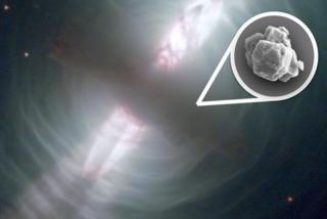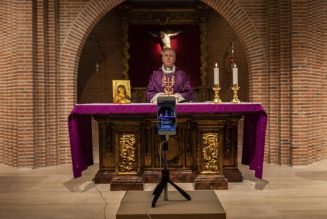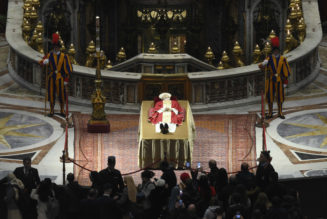ROSARY & ART: The Fourth Glorious Mystery is the Assumption of Our Lady
The Assumption of the Blessed Virgin Mary is not mentioned in the Bible, but it has been part of the Tradition of the Church from earliest times. One can find mention of the Church’s faith — which Pope Pius XII finally defined — “that the Immaculate Mother of God, the ever Virgin Mary, having completed the course of her earthly life, was assumed body and soul into heavenly glory” (Munificentissimus Deus). That faith in Mary’s Assumption is shared by both the Christian West and East (where this Mystery is called Mary’s “Dormition,” or “falling asleep”).
Why is this Mystery so important?
Because it shows the continuity of God’s plan of salvation.
As noted when we meditated on Jesus’ Resurrection, his rising from the dead was not a personal reward. It was the beginning of a process, begun on Easter and ending on the Last Day. The Resurrection of Jesus ends in “the resurrection of the body and the life of the world to come.”
And it goes right through the Assumption.
When we read Pope Pius XII’s definition of the dogma of the Assumption, we should be aware that every word was chosen carefully. The Pope deliberately wrote “having completed the course of her earthly life.” It isn’t just a nice euphemism. There is a reason the East calls this Mary’s “falling asleep.”
We as Catholics affirm that God preserved Mary free from sin from the first moment of her existence — this is why we call her “the Immaculate Conception.” Now death is a consequence of sin. But Mary was without sin. So, “having completed the course of her earthly life,” Mary did not experience passing from this life the way we do. The time of her life in this world was complete, but her transition from this world to heaven, to God, was not like our experience because we are sinners and she wasn’t.
We can say what Mary’s experience was not — it was in some sense unique to her because she is unique. So, the Church most adequately describes it as the “completion” of her earthly life which led to her being taken, “body and soul,” to heaven.
Jesus conquered sin and death. Even though Jesus had a human as well as a divine nature, he was one Person: he did not have to die. He freely chose to die “for us and our salvation.” Mary, as sinless, also passed from this world in a manner different than the rest of us.
But Jesus’ conquest of sin and death is what makes everything, including Mary’s Immaculate Conception, possible. Therefore, the consequences of that conquest of sin and death also extend to Mary, preserved free of all sin from her conception, preserved free of corruption after her “falling asleep.”
Jesus is in heaven, body and soul. He is our pattern. As he is, we shall be following the resurrection of the body on the Last Day. It’s one, unbroken chain. Jesus is the first link.
Mary is the second. She already benefits from what “God has prepared for those who love him” (1 Corinthians 2:9). Apart from her special privilege as the sinless Mother of God, Mary is already the Promise of what God intends for all humanity. In a very real sense, like her Son, Mary reveals man — as God intends humanity to be — to himself.
The body is not just a tool or attachment. Even less is it trash or compost. It is not a husk or snakeskin, to be shed and discarded. We do not have the “wrong” body. These are all truths the Resurrection and Assumption both teach us.
These are truths in dire need of being heard in our world today. As witnesses prompted and empowered by the Holy Spirit, do we speak them?
Today’s mystery is depicted in art by the 16th-century Baroque “Italian” artist, Annibale Carracci. “L’Assunzione della Vergine” (The Assumption of the Virgin) is part of a larger altarpiece in the Roman Basilica Church of Santa Maria del Popolo.
Tradition has it that the Apostles had gathered around Mary and, when she had “fallen asleep,” “having completed the course of her earthly life,” they placed her body in a tomb. Returning to it, they found — as they had earlier with Jesus — an empty tomb. Where they had placed her body, Tradition says they found roses. (It’s one reason there remains a tradition of blessing flowers on the Solemnity of the Assumption.)
That Tradition is captured in Carracci’s painting. He resolves the tension between the “completion of her earthly life” and her being “assumed body and soul into heavenly glory.” As in Jesus’ case, the Apostles find an empty tomb with roses and an article of clothing. (It was said that, as Mary was assumed into heaven, she left her girdle belt for St. Thomas, who might have still been looking for “corroborating evidence”). There is no body. Instead, the Apostles see her body rising to and breaking into the heavens, borne by angels. John is the beardless Apostle in red, closest to Mary, to whose care she was entrusted (John 19:26-27). Peter, in gold and blue, is in the foreground. As in Christian art of the Ascension, the veil between heaven and earth is rent in Assumption paintings: we see what is on earth and in heaven. As in the Ascension, angels are also depicted among the Apostles.
Carracci painted another version of the Assumption, held by the Prado Museum in Madrid. It has many of the same features as the Roman Assumption, but is more dynamic in its movement.
Mary reveals the destiny Jesus gave man through the Resurrection. Do I reverence the human body the way God has, making it the Temple of the Holy Spirit (in a unique way in the case of Mary), destined for eternal glory?








